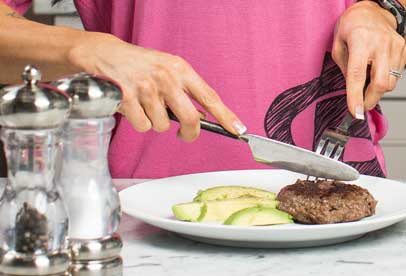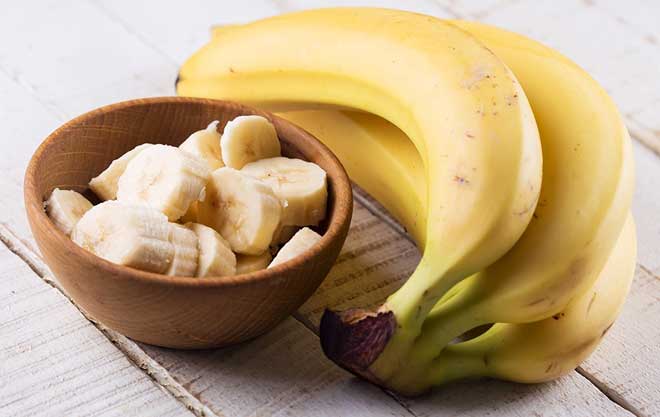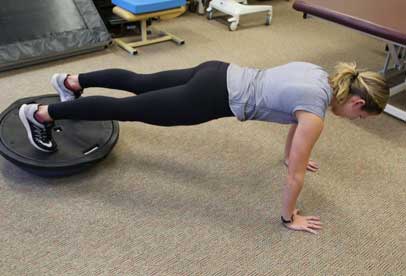
Eating Carbs and Fats Before a Workout? Read This
The New York Times published an article ?Should Athletes Eat Fat or Carbs?? last week which was based on a study that shows a diet comprised of 85 percent fat can help improve overall performance for ultra-endurance athletes more than the traditional high-carbohydrate diet considered best for athletes. And by fat, they mean good fats that come from foods like nuts, avocados, and extra-virgin olive oil ? not your cheeseburgers and French fries. But before you throw all your healthy eating rules out the window, it′s important to note that this recommendation is not for most of us ? these recommendations for real athletes. We′re talking about people who exercise for a living ? think NBA players, Olympic swimmers, or professional marathoners.
Let′s be honest: Most of us don′r run more than two marathons a week or work out at all hours of the day, so this way of eating is not recommended, even for high school and college players and people who exercise regularly. However, this information certainly brings into question traditional thinking and, as so often with these studies, leaves us wondering if this type of eating could benefit other types of athletes or moderately active people. We?ll need to continue to watch the research for more answers.
It′s important to remember that carbohydrates are an essential part of a healthy, well-balanced diet and provide fuel for your workouts in the form of glycogen, which is stored in the liver and muscles. Fat, however, must be broken down into fatty acids before it can be used as fuel, and only endurance athletes who vigorously exercise throughout the day are able to use up all their glycogen stores before their bodies start using fat. A ketogenic diet, like the ones the article reviews with 85 percent of the diet from fat, forces your body to use fat more readily as an energy source. This is referred to as a ?ketoadaption? and takes several weeks to achieve.
Still, it′s not a good idea to overdo it on carbohydrates or fat for all your meals. Fats should only comprise 20 to 30 percent of your total daily calorie intake per meal (think two slices of avocado). Carbohydrates should make up 40 to 50 percent of your meal, and sources of good carbohydrates include vegetables, fruits, legumes, and whole grains. Government experts have offered suggestions for the 2015 Dietary Guidelines, (due to be published in the fall) which encourage Americans to cut down on meat, added sugars, and starchy, high-carb foods and include more fruits, vegetables, whole grains, and healthy fats into their diets.
?The move toward reducing the amount of carbohydrates recommended for the general public is because most of us are not active. We sit too much! When we don′r move, or if we move for only an hour a day, we′re not utilizing all the carbohydrates we are eating, and therefore we continue to gain weight and increase our risk for chronic diseases. For the most part, we are moving too little and eating too much and especially carbohydrates because they are easy, available, and taste good,? says Maureen Namkoong, MS, RD nutrition and fitness director at Everyday Health.
There′s a place for good carbohydrates and fats in a balanced diet. Good carbohydrates and fats give you energy, may help you lose weight, and promote cardiovascular health. But too much of a good thing can be bad ? and this is true for fats and carbs, too.
Related News

Can Eating Bananas Help You Lose Weight?

Haryana girl Nishtha Dudeja wins Miss Deaf Asia 2018 crown
.jpg)
10 Weight Loss Tips to Make Things Easier (and Faster)

Try these 4 simple yoga asanas to gain weight

4 Superfoods for a Healthy Looking Skin

This One Exercise Helps You Become a Better Runner

Legumes, nuts and kale can help you get big muscles

Do you want to be paid for sleeping well at night?
Most Read
★Man has lived with giant neck for 13 years after going to doctors for help
★5 foods for healthy skin
★6 Foods You Can Incorporate In Your Fat Burner Diet For Best Results
★9 Simple Yoga Asanas & Tips for Weight Loss
★10 Signs You are Obsessing About Your Weight
★10 Most Effective Weight Loss Exercises For Torching Fat
★The best effective and natural plants for a good memory
★Does ginger gene offer key to younger looking skin?
★9 Food Habits To Keep Eating To Lose Weight
★WHO says strawberries may not be so safe for you
★6 Fantastic Yoga Asanas That Will Help You Fight Skin Problems
★Correlation Between Almonds and Weight Gain
★Growing Propagating and Using Aloe Vera
★Heres why you should go sulphate-free with your hair care
★Top 10 Fruits To Eat To Lose Weight Quickly
★Numerous health benefits of bitter melon (uses , side effects)
★How to Do Face Cleansing at Home?
★6 Best Oils for a Naturally Clear and Glowing Skin
★Five foods that can cause problems if consumed on an empty stomach!
★Learn How To Do Pearl Facial At Home To Get Naturally Glowing Skin Instantly
★How to Make Elderberry Syrup
★The Brilliant Food Combo That Helps You Burn More Fat
★8 Fruits that Burn Fat: Include Them In Your Diet For Great Health Benefits
★Hair removal injuries rocketed NINE-FOLD since 1991
★Breathe Right to Live a Healthier and Better Life
★Is there a way to combat greying?
★10 Natural beauty tips for face you must try
★Grean tea could help get rid of acne
★Why You Probably Shouldnt Take Diet Advice from Your CrossFit Coach
★Dandelion Benefits Biodiversity, Soil and Your Health
★Skinny jeans and big fluffy hoods contribute to back pain
★Face Scrubs and Face Packs
★Daily consumption of tea protects the elderly from cognitive decline
★Expert reveals the snacks you should eat, according to your body type
★Research reveals surprising health benefits of chewing your food
★Best and Worst Drinks for Weight Loss
★Manage oily skin in winters with these steps
★3 Must Try Face Yoga Exercises For Glowing Face
★5 Yoga Poses that Can Give You a Glowing Skin
★Eat more fruit and veg for a longer life
★Weight-lifting and protein shakes rich in growth hormones may make you bald
★Top Natural Body Care Tips for Women
★Carbohydrates and sugars
★Yoga Poses for People with Less Flexible Body
★Using Kalonji Seeds for Weight Loss
★Everyday Medications You Should Never Take When You Exercise
★5 Effective Baba Ramdev Yoga Asanas To Increase Height
★A Beginners Guide to Sun Salutations
★Five-second rule for food dropped on the floor approved by germ scientists
★How To Achieve The Perfect Nail Shape
